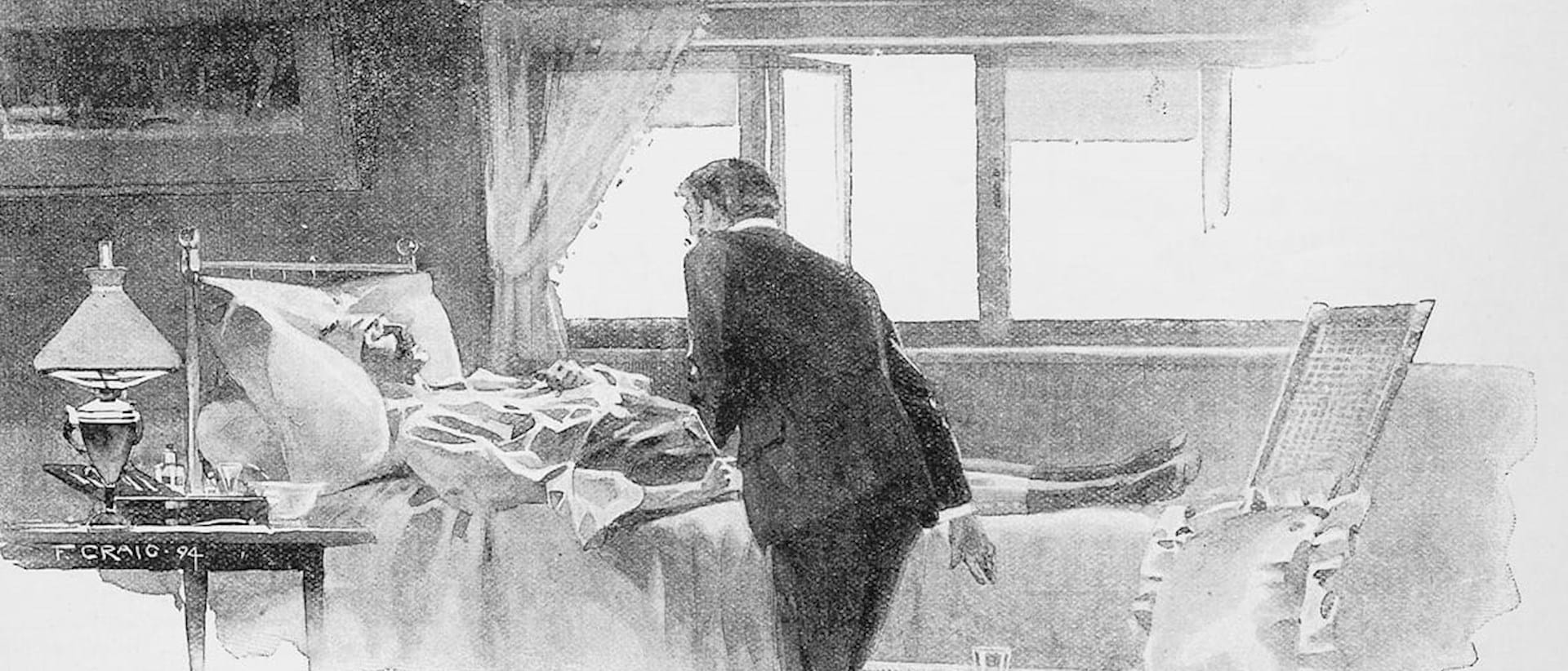In 2022, the Medical and Dental Defence Union of Scotland celebrates its 120th anniversary. Such a moment offers a rare opportunity for reflection. While the Union’s sights may be firmly set on the future, it is always useful to remember the past – for only by understanding and appreciating our roots can we truly hope to flourish.
From our 21st century perspective, it is easy to suppose that medicine and dentistry were always much as they are now — professions regulated by legislation, organised by governing bodies and with entry and continued quality of practice constantly monitored. Nothing could be further from the truth.
Until the passing of the 1858 Medical Act there was no legal definition of a qualified medical practitioner, no medical register and no General Medical Council. It required further similar legislation in 1878 to offer some of the same structure to the dental profession. Such regulation was sorely needed, for in 1841 less than one third of all those practising medicine in the UK were qualified to do so.
Throughout the latter half of the 19th century, the professional status of medicine and dentistry continued to evolve. That, accompanied by significant developments in medical science and technology, meant that the range of possible treatments offered by doctors and dentists also expanded significantly. However, with those new possibilities came new expectations from patients, and of course the possibility of disappointment when those hopes were not matched with reality.
Frivolous allegations
Patients who are critical of their care are hardly a new phenomenon. They have doubtless been a feature of medical and dental practice since the very beginning, but in the 1880s, there was growing concern about the increase in complaints.
In 1883, a leading article was published in the British Medical Journal, entitled ‘Vexatious Prosecutions of Medical Men.’ This article gave voice to the concerns of many in the medical profession over the increase in what they saw as frivolous and unfounded allegations of malpractice. The authors highlighted a charge of manslaughter brought against two English doctors following the death of a child in their care. The charge was dismissed by a magistrate who characterised the case as one of "persecution not prosecution".
Soon after, there were moves within the profession to offer financial support to those fellow physicians who were the subject of such suits. Initially, these were nothing more than local, informal groups paying subscriptions on an ad hoc basis to help offset often crippling legal expenses.
In 1885, an even more alarming report was published in the medical press bringing the case of Dr David Bradley of Chesterfield to the notice of the profession. He had been sentenced to two years with hard labour for an alleged assault on one of his female patients. The verdict was considered an outrage and overturned, but only after he had served eight months of his sentence.
These were far from isolated incidents, and it was becoming increasingly clear to all practitioners that they could find themselves "in the same position at any moment". While no profession should be above scrutiny and no practitioner unaccountable for their actions, the nature of the charges raised against doctors and dentists were, as one observer noted, often "animated by malice or based on frivolous pretexts". They were also regarded as potentially of "a ruinous nature".
Everyone agreed that something had to be done.
The beginning of medical defence
What that turned out to be was a meeting in October 1885 of "two solicitors and five gentlemen" — but interestingly no medical or dental practitioners —who signed a memorandum instituting the Medical Defence Union (MDU). Membership was to be by subscription and was only open to the medical profession. Dentists were specifically excluded unless they were also on the medical register — a decision the MDU reinforced in 1906 and only rescinded in 1948.
The first rival defence union was formed in 1892 when some MDU members resigned and formed the London and Counties Medical Protection Society. Despite early attempts to amalgamate this fledgling organisation with the MDU, it maintained its independence and in 1947 dropped the ‘London and Counties’ from its name, continuing to this day as the Medical Protection Society (MPS).
The need for MDDUS
Although there were now two bodies offering medical defence in England, practitioners in Scotland were also becoming aware that they were not immune to the same charges of defamation or malpractice that their English colleagues were facing. Indeed, in 1901 one such case brought before the Edinburgh Court of Session served to focus their concerns.
Dr Donald Murray of Leith had been consulted by John Farquhar, a provisions merchant, who complained of a scratched finger. The doctor diagnosed erysipelas and prescribed a linseed and oatmeal poultice, before going away on holiday. While absent, the patient consulted another doctor who prescribed a different treatment and continued to attend him.
A month after the initial consultation, both the second doctor and Dr Murray, who had returned from his holiday, concurred that amputation of the finger was now necessary. The patient was angry and critical of Murray’s lack of care, and he sought damages in the court. What shocked the Scottish medical profession was not the suit that was brought, but the mood of the proceedings. When evidence was heard, three of the four judges presiding agreed that the case could not be dismissed without an enquiry into the allegation of negligence on the practitioner’s part.
Against this background, in May 1902 the Medical and Dental Defence Union of Scotland (MDDUS) was formed. Its founder members were nine doctors and one dentist, distinguishing it immediately from the MDU as inclusive of both the medical and dental professions. The need for a specifically Scottish defence union was in large part due to important differences between Scots and English law.
By the end of its first year, the membership had risen from an initial 26 practitioners to 539. In comparison the membership of the MDU at the time was approximately 5,000. Most of the cases that initially came to its attention only required advice, such as the practitioner who was being badgered by a local church to certify if a woman, whose confinement he had recently attended, had conceived the child out of wedlock. MDDUS supported his stance not to have any part in such an ecclesiastical dispute.
The first MDDUS case
The first true medico-legal case presented to the MDDUS was that of a general practitioner, Dr John Cunningham, who was being sued by the wife of one of his patients. Mrs Margaret Gillies claimed that her husband had died as a result of Cunningham’s negligence when he performed a procedure under chloroform anaesthesia in their home.
Despite initial work on the case, MDDUS quickly discovered that the doctor in question had only applied for union membership on the same day that he had received notice of the action against him. The patient’s death had in fact taken place months earlier. As was their policy from the start, MDDUS can only offer support with incidents that happen whilst the doctor or dentist is in benefit of membership, and will do so even if they are no longer in membership when they are notified of the incident. However, as this event occurred outside the time the doctor was in membership, MDDUS had to cease its formal involvement in this case.
Upholding standards
Since that modest start, MDDUS has grown in stature and reach and now has over 50,000 members across the UK. It remains true to its original ideals of medical defence which, as one former MDDUS chief executive has stated, should be "neither passive nor protectionist". All medical defence unions have a responsibility not just to safeguard their individual members but also to uphold the standards of the medical and dental professions as a whole.
A lot has changed in the practice of medicine and dentistry over the last 120 years. However, what has remained a constant is the need for professional protection. Fundamental to MDDUS’ mission is the notion that any practitioner, irrespective of the quality of the care they provide, can find themselves the subject of an expensive lawsuit. At its inception, the first convener of the MDDUS Council, Dr RW Forest, reminded those present that: “Such claims are made when they are least expected and deserved".
For the past 120 years, countless practitioners across the UK have benefited from the support, wise counsel and practical help offered by MDDUS. Given its history there is no reason to suppose that the next 120 years will be any different.
Sources
- R. Forbes. Sixty Years of Medical Defence, MDU, 1948.
- N. Muir & D. Bell. A Century of Care, MDDUS, 2002.
- BMJ 1883; 2: 1207, 1211 & 1885; 2: 1177-8.
- MDDUS Minute Book No 1. May 1902–December 1908.
This page was correct at the time of publication. Any guidance is intended as general guidance for members only. If you are a member and need specific advice relating to your own circumstances, please contact one of our advisers.
Read more from this issue of Insight Secondary

Save this article
Save this article to a list of favourite articles which members can access in their account.
Save to library

